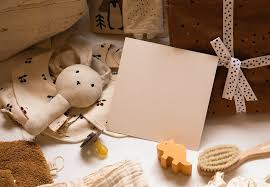When the question of feeding a baby comes then there is some parent who does only breastfeeding and there is some parent too who does a mixture of breastfeeding and bottle feeding. Many have the question of which the best thing to do. Now, if someone asks which one is the best formula to feed a baby then there is no clear-cut answer to the question.
Know Important Facts About Mix Feeding Your New Born
Many say that if your baby is older beyond the newborn stage, you can usually maintain your breastmilk alongside formula feeding. Many older babies from eight to nine months can breastfeed just a handful times a day and there is still a supply. Here are some important facts about mix feeding that will help you understand its importance and other related aspects.
Effects of Mix Feeding
Mix feeding means feeding a baby both by breast milk and formula milk in a bottle. When you breastfeed your baby for a prolonged time then you may see that your nipples get sore and the production of milk is downsizing. Here are some other effects:
- Breastfeeding is an enormous time commitment. It has some limitations on a mothers schedule and lifestyle. Some mothers cannot attend any events or return to work. Pain is another disadvantage of prolonged breastfeeding for some mothers.
- Nursing your baby is loving and bonding experience for many mothers, it can also be a challenge to those who experience physical difficulties. From sore nipples to crack cuts, engorgement, blocked ducts, mastitis and much more.
- Eventually, breastfeeding can bring on a variety of painful condition that will cause mothers to wean their babies. Women who breastfeed their babies for past six months also discover that the babies grow teeth and may bite down while feeding them which causes a great pain and becomes unbearable for the mother and thus causes an end to breastfeeding.
Mix Feeding: A Solution To All The Problems
This is the time when you opt for mix feeding. It will provide you much required time to produce enough milk for your baby’s next time feeding. Formula milk is produced in such a way that it contains all the necessary nutrients and vitamins required for your baby and tries to duplicate mother’s milk. Thus, it’s healthy and safe for your baby.
The convenient part of formula feeding is that you can feed the baby a bottle anytime and anywhere. This allows the mom to share the feeding duties and helps her partner in the crucial feeding process. Once a bottle is made, you can leave your baby with your partner and know that your little one’s feeding is being taken care of.
Know More About Mix Feeding
But the antibodies that are found in the breast milk are not present in formula milk. So the formula milk can’t provide the baby with the added protection against illness and affecting that breast milk does. Unlike the breast milk which is always available and served at the right temperature, formula feeding requires a planning and you have to make sure that you have what you need when you need it. Buy formulas to avoid late night runs to the store.
Deciding how you will feed your baby is not an easy decision to make. You will really know the right choice for your family once your baby comes. Many women decide one method before the birth of their babies and change it after the birth, or in weeks or months later.
And many women decide to breastfeed and supplement with formula because they find that is the best choice for their family and their lifestyle.
Ideal Formula to Combine Breast Feeding and Bottle Feeding
There is no heart and soul rule for combining breastfeeding and bottle feeding. Whenever you feel that you are unable to provide your child the required amount of milk or you are tired of feeding your baby through your breasts, then you can shift to bottle feeding.
Some Tips For Your Help
- Don’t shift to the bottle feeding completely all at once. Before introducing formula or a bottle with breast milk, be sure to wait until breastfeeding is well established. This will help reduce your baby’s chances of developing nipple confusion or establishing a bottle preference.
- If you are going to give same formula as the breastfeeding then first breastfeed the baby to keep up your supply. You can use a breast pump to keep up your supply. Try pumping before you go to bed at night or the first thing at morning, some doctors also recommend a pumping before the nursing session. Since breastmilk supply depends on the laws of supply and demand, you can trick your body into producing more milk by employing the use of a pump.
- Try to give your child bottle feeding prior to breastfeeding whenever he or she is demanding for food. Don’t force your child to take the bottle feeding if he seems to be unwilling. Combining breastfeeding with formula feeding is better for your baby then switching only to formula feeding. This means both you and your baby can enjoy the benefits of breastfeeding.
Tips To Introduce Bottle Feeding To Your Baby
Until the age of six months, you have been feeding your baby with your breast milk. Thus, when you will introduce bottle feeding for the first time, then your baby may seem reluctant or unwilling to take that in.
Most major organizations recommend waiting a few weeks before introducing any alternative nipples to breastfed babies, whether in the form of a pacifier or a bottle. This is because a new-born is still learning how to nurse, so it’s important to not confuse your infant by adding something else to the mix other than the breast.
Introducing Breast Milk To The Baby
Mom’s milk supply supported by a lactation protein powder from Majka is also still being established, so try exclusively breastfeeding for the first few weeks.. Most babies, who are offered a bottle before six months of age will eventually take it, so don’t worry about introducing it so soon.
Many companies that make bottles market theirs as the best for breastfed babies, and this is often based on the nipple having a shape that mimics the breast. The truth is that the best bottle for your baby is the one that your baby will take. So, don’t invest in a huge stock of bottles when trying to figure out which one your baby will like.
- First, buy one or two and see if your baby likes it or not.
- Keep in mind not to feed a huge amount to your baby while feeding. So buy the smaller bottle which will also let your caregiver know that a huge feeding is not needed.
- Some babies may refuse all bottles, so it might be time to consider an alternative feeding method. Even if it seems strange to you, alternative methods like cups, spoons, medicine droppers, and syringes can be considered.
- Sometimes babies who start off needing an alternative feeding method eventually transition to a bottle, while others are happy to cup feed exclusively.
- Feeding on a bottle and the breasts, are two entirely different things for a baby, from how the latch feels to the actual sucking mechanism needed to remove milk. Just like learning to ride a bike can be hard at first, so too can learning how to eat in a completely new way! Keep that in mind as you and your baby start with a bottle.
- Don’t wait until your baby is screaming and starving. He cannot learn anything if he is distressed. Offer the bottle during your baby’s “happy time” when they show early feeding cues.
- Hold the bottle just near their lips and let them take the nipple in, rather than forcing it into their mouth. Talk to the baby and make eye contact, and change up positions as needed. If the baby refuses at first, that’s okay. Try again in a few minutes.
The key is to not get so worked up that you lose your cool and your baby learns to associate bottle-feeding sessions with stress and anger. Remember, the goal is to mimic breastfeeding, and slow-flow nipples tend to keep a more physiologic pace when it comes to milk flow.
Nipples that flow faster may make it too easy for a baby to drink and this can lead to frustration when he or she is back at the breast. It can also lead to guzzling and overfeeding, which may make it hard for mom to keep up with providing enough milk via pumping.
Thus, from here you can see the benefits and importance of breastfeeding. Using mix feeding you can certainly incorporate good health and nourishment in your child.




Be First to Comment